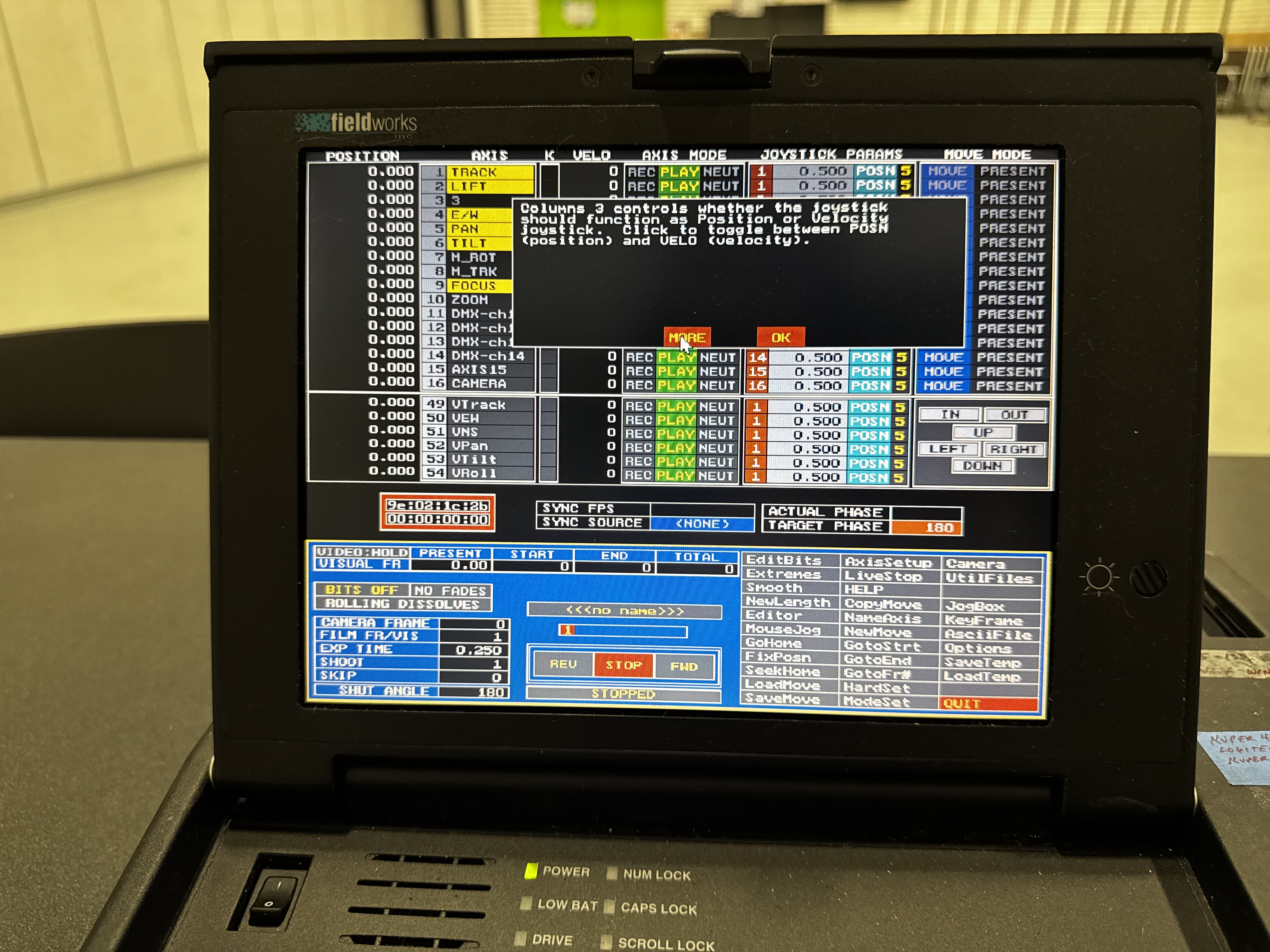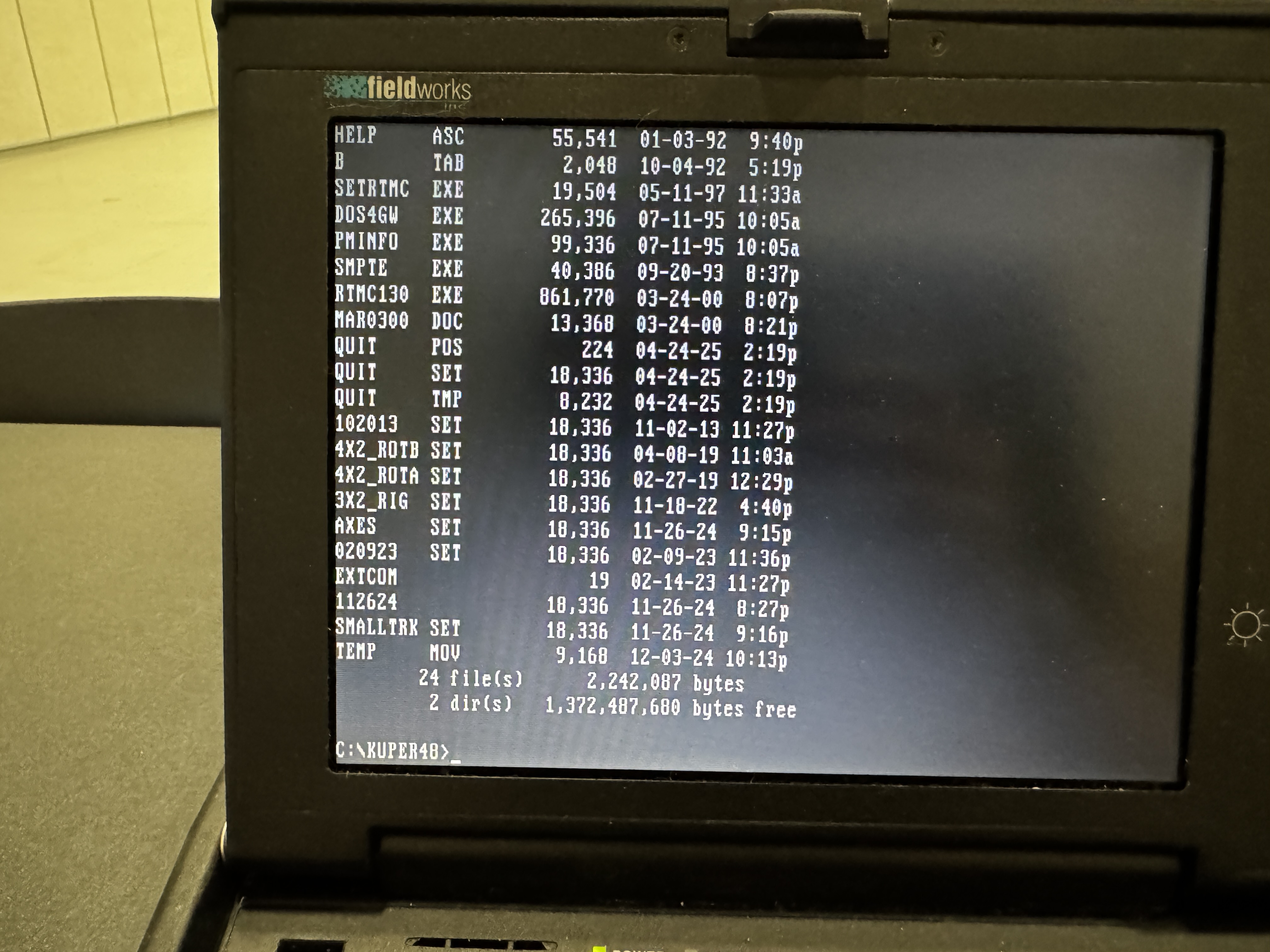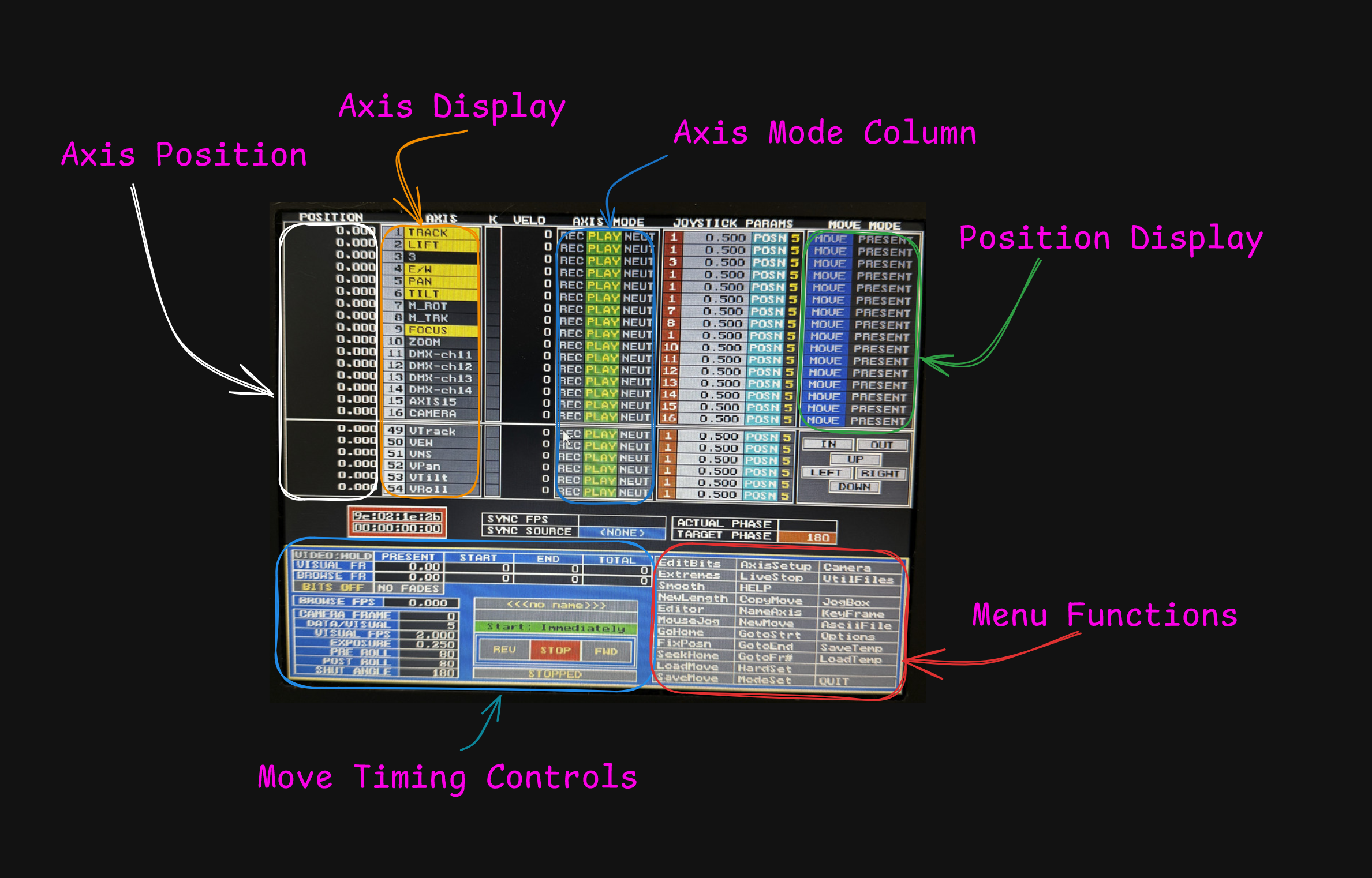Software Startup
Step-by-step instructions for booting the system and launching the RTMC130 Motion Control software.
Software Startup Guide
This guide provides detailed instructions for properly booting your system and starting the RTMC130 motion control software. Following these steps in the correct order ensures optimal performance and prevents potential issues.
Note: The RTMC130 software is designed to run in pure MS-DOS mode, not within a Windows environment. Running from within Windows can cause memory conflicts and performance issues.
System Requirements
Before launching the RTMC130 software, ensure your system meets these requirements:
Required Software Components
- MS-DOS: Version 5.0 or higher (6.22 recommended)
- Mouse Driver: A DOS-compatible mouse driver (typically MOUSE.COM)
- HIMEM.SYS: Memory manager for extended memory access
Required Hardware Components
- Computer: DOS-compatible PC with ISA slots
- Memory: 640KB conventional memory minimum
- RTMC Card: RTMC48 or RTMC16 card properly installed
- Display: VGA or better for proper interface display
- Input: Mouse and keyboard
CONFIG.SYS and AUTOEXEC.BAT Configuration
Optimal DOS configuration for RTMC130 includes:
Example CONFIG.SYS:
DEVICE=C:\DOS\HIMEM.SYS
DOS=HIGH
FILES=30
BUFFERS=20
SHELL=C:\COMMAND.COM C:\ /E:1024 /P
Example AUTOEXEC.BAT:
@ECHO OFF
PATH C:\DOS;C:\RTMC48
C:\DOS\MOUSE.COM
Important: Avoid loading memory-resident (TSR) programs or other drivers that might conflict with RTMC130's memory usage. For optimal performance, create a minimal boot configuration.
Booting to MS-DOS
To ensure optimal performance, the RTMC130 software must be run in a pure MS-DOS environment, not from within Windows.
From a Windows Computer
- Turn on the computer
- If the computer boots directly to Windows:
- Restart the computer
- Press the appropriate key during startup to access boot options (often F8, F12, or Delete)
- Select "Boot to MS-DOS" or "Command Prompt Only" if available
- For Windows 98/ME systems:
- Press F8 during startup
- Select "Command Prompt Only" from the boot menu
- For older systems with a boot menu:
- Select MS-DOS from the boot menu
Tip: For dedicated RTMC130 workstations, consider creating a custom boot disk or configuring the system to always boot directly to MS-DOS.
Using a Boot Disk
For systems that cannot easily boot to pure DOS, using a boot disk is recommended:
- Create a bootable DOS floppy disk with the necessary system files
- Add optimized CONFIG.SYS and AUTOEXEC.BAT files
- Insert the disk and restart the computer
- Set the BIOS to boot from the floppy drive if necessary
- Once booted to DOS, you can access the hard drive using drive letters
Note: Never attempt to run RTMC130 from a DOS window within Windows, as this will not provide the direct hardware access and memory management required by the software.

Launching RTMC130
Follow these steps to properly launch the RTMC130 software after booting to MS-DOS:
Basic Launch Procedure
- At the DOS prompt (typically
C:\>), navigate to the RTMC installation directory:cd \rtmc48
- Launch the RTMC130 software by typing:
rtmc130
- Wait 5-10 seconds for the software to load. You'll see initialization messages as it checks hardware and loads components
- If the RTMC card is properly installed and detected, the main Kuper Control Panel should appear
The default RTMC48 directory showing key files:

Launch Options and Parameters
The RTMC130 software can be launched with optional parameters for specific configurations:
| Parameter | Function | Example |
|---|---|---|
| /s=[path] | Load a specific setup file at startup | rtmc130 /s=MySetup.SET |
| /m=[path] | Load a specific move file at startup | rtmc130 /m=Camera1.MOV |
| /c=[path] | Specify alternative CONFIG file | rtmc130 /c=Alt.CFG |
| /e | Engineering mode (extended features) | rtmc130 /e |
Common Launch Issues and Solutions
- "Card Not Found" Error: Verify the RTMC card is properly seated and jumpers are set correctly
- "Insufficient Memory" Error: Free conventional memory by removing TSRs or optimize your CONFIG.SYS
- "Mouse Not Found" Error: Ensure a compatible mouse driver is loaded
- Screen Display Issues: Try launching with
/vparameter for VGA mode - Hanging at Startup: Check for hardware conflicts (IRQ or memory address)
Important: If the system fails to launch properly, DO NOT reset the computer using the reset button. Instead, press ESC or CTRL+C to abort the launch safely.
Interface Overview
Upon successful launch, the RTMC130 Control Panel (main screen) will be displayed, showing several key interface elements:
Main Control Panel Layout
The Control Panel is the primary interface for the RTMC130 system:
┌─────────────────────────────────────────────────────────────────────────────┐
│ KUPER MOTION CONTROL │
├────────────┬────────────┬──────────┬─────────┬────────────┬─────────────────┤
│ AXIS NAME │ POSITION │ MODE │ TYPE │ JOG PARAMS │ JOYSTICK PARAMS │
├────────────┼────────────┼──────────┼─────────┼────────────┼─────────────────┤
│ 1 PAN │ 0.000 │ REC │ S │ 10.00 │ CH1 Position │
├────────────┼────────────┼──────────┼─────────┼────────────┼─────────────────┤
│ 2 TILT │ 0.000 │ REC │ S │ 10.00 │ CH2 Position │
├────────────┼────────────┼──────────┼─────────┼────────────┼─────────────────┤
│ 3 TRACK │ 0.000 │ NEUT │ S │ 5.00 │ CH3 Velocity │
├────────────┼────────────┼──────────┼─────────┼────────────┼─────────────────┤
│ 4 BOOM │ 0.000 │ OFF │ S │ 2.00 │ CH4 Position │
├────────────┼────────────┼──────────┼─────────┼────────────┼─────────────────┤
│ ... │ ... │ ... │ ... │ ... │ ... │
├────────────┴────────────┴──────────┴─────────┴────────────┴─────────────────┤
│ │
│ Frame: 0 Duration: 200 Rate: 24.000 │
│ │
├──────────┬──────────┬──────────┬──────────┬───────────┬────────────┬────────┤
│ HardSet │ AxisSetup │ Editor │ StopMotn │ UtilFiles │ Options │ QUIT │
└──────────┴──────────┴──────────┴──────────┴───────────┴────────────┴────────┘

Key Interface Elements
Familiarize yourself with these main elements of the Control Panel:
| Interface Element | Description |
|---|---|
| Axis Display | Shows information for each axis (up to 16 visible at once) |
| Position Column | Real-time readout of the current position for each axis |
| Mode Column (REC/NEUT/OFF) | Indicates operational mode for each axis |
| Type Column (S/B/I) | Indicates movement type (Still/Blur/Index) for stop motion operations |
| Timeline Display | Shows current frame, move duration, and frame rate |
| Command Buttons | Access to main system functions (along bottom of screen) |
Navigation and Input Methods
The RTMC130 interface can be controlled using:
- Mouse: Click on screen elements to select or adjust them
- Keyboard: Type commands or values directly
- Jogbox: Use the handheld controller for common operations
- Two-Letter Commands: Type two-letter codes for specialized functions
Tip: To access help directly from the RTMC130 software, press F1 or type ? followed by Enter.
Closing the Software
When you're finished using the RTMC130 software, it's important to close it properly to ensure all data is saved and the system is shut down gracefully.
Proper Shutdown Procedure
- Save any unsaved work:
- Press
UtilFilesbutton - Select
Save MoveorSave Setupas appropriate - Enter a filename and confirm
- Press
- Exit the software:
- Click the
QUITbutton in the lower right corner of the main screen - Alternatively, type
qy(Quit Yes) followed byEnter
- Click the
- Confirm exit if prompted
- Wait for the system to return to the DOS prompt (C:\RTMC48>)
Important: Do not turn off the computer immediately after exiting RTMC130. Some file operations may still be in progress. Wait until you see the DOS prompt before shutting down.
Computer Shutdown
- At the DOS prompt, you can now safely shut down the computer
- For older DOS systems without sophisticated power management:
- Wait for at least 5 seconds after returning to the DOS prompt
- Turn off the power switch on the computer
- Turn off any external equipment (motor drivers, etc.)